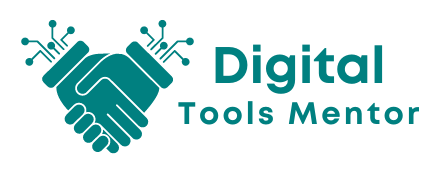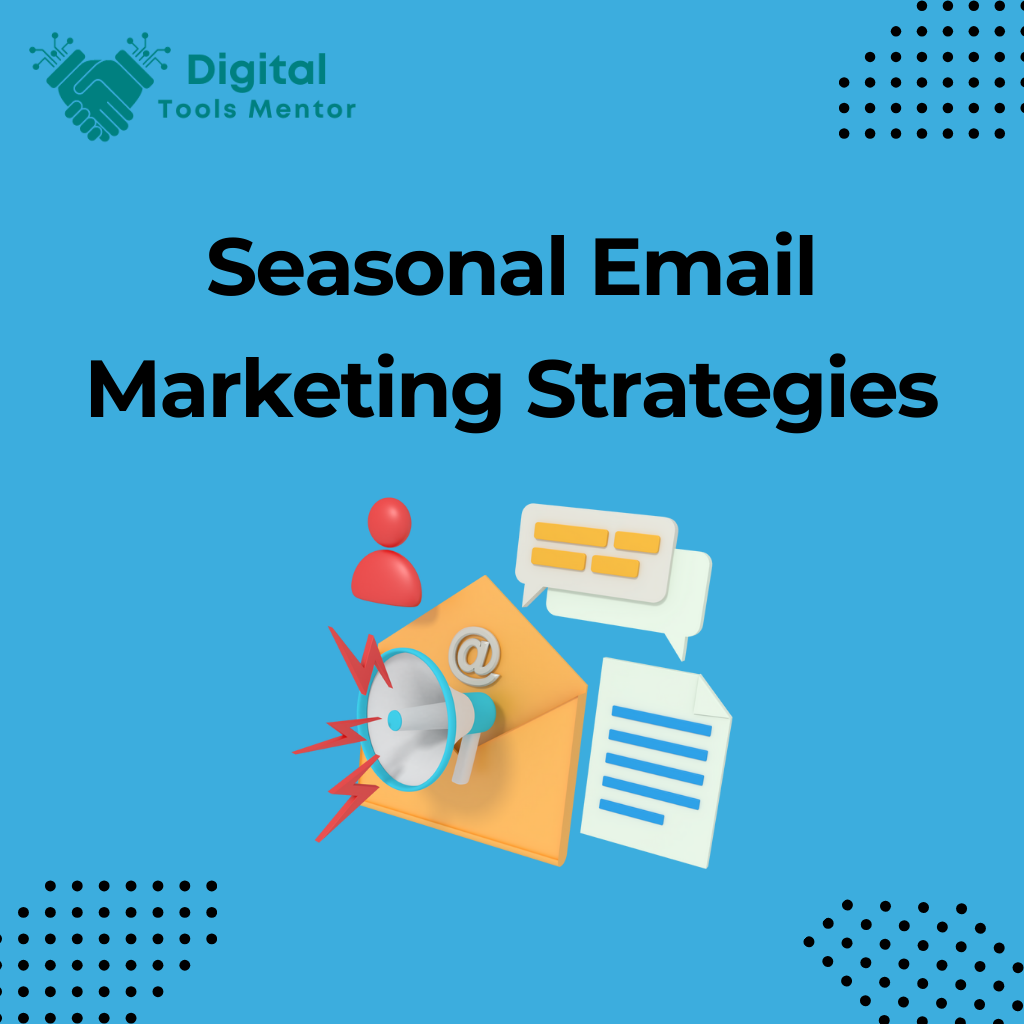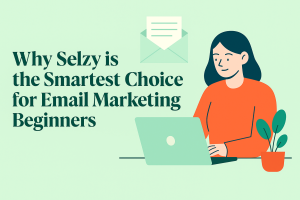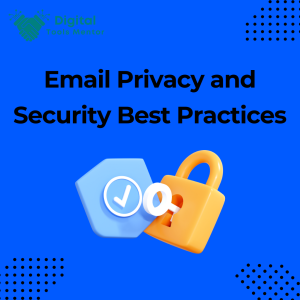Maximizing Sales Throughout the Year: Seasonal Email Marketing Strategies
Seasonal email marketing refers to the strategic adaptation of your email campaigns to coincide with holidays, changes in seasons, or significant cultural events. This approach allows marketers to leverage the natural shifts in consumer behavior and interests that come with different times of the year. By tailoring your messages to fit the context of these periods, you can make your email marketing efforts more relevant and engaging to your audience.
The importance of aligning your marketing efforts with seasonal events and holidays cannot be overstated. During peak times like Christmas, Black Friday, or back-to-school seasons, consumers are more inclined to shop and are on the lookout for deals and special offers. By synchronizing your marketing messages with these key dates, you can not only increase the relevance of your content but also capitalize on the increased propensity to spend, thus maximizing your sales potential and strengthening customer relationships.
Moreover, seasonal marketing isn’t just about boosting sales during high-traffic periods; it’s also about building and maintaining a year-round engagement with your customer base. By consistently appearing in their inbox with content that aligns with their current needs and cultural moments, you foster a stronger connection and keep your brand top-of-mind. This strategic alignment ensures that your marketing messages are not only seen but are also more likely to be welcomed and acted upon.
Understanding Your Audience’s Seasonal Needs
To effectively engage with your audience through seasonal email marketing, it is crucial to understand their specific needs and preferences during various times of the year. Identifying the key seasons and events that resonate with your audience forms the backbone of a successful seasonal marketing strategy.
Identifying Key Seasons and Events Relevant to Your Audience
Start by mapping out a calendar of significant holidays, events, and seasons that align with your business and your customers’ interests. This could include international holidays such as Christmas and Valentine’s Day, cultural events like Diwali or Eid, or even seasonal changes like back-to-school and summer vacations. Understanding these key periods helps you anticipate shifts in consumer behavior and prepare targeted campaigns that speak directly to your audience’s needs.
For businesses with a diverse customer base, it’s important to segment your audience and customize your messaging to cater to different cultural backgrounds and regional preferences. This personalized approach ensures that your campaigns are relevant and engaging to each segment of your audience.
How Customer Purchasing Behavior Changes with Seasons
Consumer purchasing behavior often varies dramatically with the seasons. For instance, during the winter holidays, customers may be more inclined to purchase gifts and festive goods, while summer might trigger an increase in bookings for vacations or outdoor-related products. Each season can bring about a change in what consumers value most, be it comfort, utility, or indulgence.
During festive seasons, there is typically a higher volume of spending as consumers are in a buying mood, influenced by the festive spirit and promotional campaigns. Conversely, during off-peak seasons, consumers might be more responsive to personalized offers and exclusive deals as businesses compete to capture their limited attention.
By understanding these patterns and anticipating the needs of your audience, you can tailor your email marketing efforts to offer solutions right when your customers are most receptive. This not only enhances the effectiveness of your campaigns but also helps in building a loyal customer base that feels understood and valued by your brand.
Explore 23 Best Email Marketing Platforms in 2025
Planning Your Seasonal Email Campaigns
Effective seasonal email marketing requires careful planning and execution. Establishing a clear timeline and utilizing the right tools are essential steps to ensure your campaigns are timely, relevant, and successful.
Timeline for Planning Ahead of Major Holidays and Events
- Long-Term Planning: Begin by identifying major holidays and events relevant to your audience at least 3 to 6 months in advance. This foresight gives you ample time to design, create, test, and refine your email campaigns.
- Content Creation and Design: Allocate 1 to 2 months prior to the event for drafting the content and designing the emails. This should include crafting compelling subject lines, engaging body content, and visually appealing graphics that resonate with the seasonal theme.
- Testing and Optimization: Reserve at least 2 to 3 weeks for A/B testing different elements of your emails such as subject lines, call to action (CTA) buttons, and email layouts. This testing phase is crucial to understand what resonates best with your audience and ensures higher open rates and engagement.
- Scheduling and Launching: Schedule your emails to be sent out well in advance of the event but close enough that the message is timely. For instance, a Black Friday sale announcement should go out a few days before, not weeks.
- Follow-Up Campaigns: Plan for follow-up emails post-event, which might include thank you messages, feedback requests, or promotions extending beyond the day of the event.
Tools and Resources Needed for Effective Planning
- Email Marketing Software: Platforms like Mailchimp, Klaviyo, or HubSpot are essential for designing, scheduling, and automating your email campaigns. They also provide valuable analytics to track the success of your emails.
- Content Management Tools: Use tools like Trello or Asana for planning and tracking the progress of your email campaigns. These tools help in managing tasks, deadlines, and collaborations across teams.
- Graphic Design Software: Tools like Adobe Photoshop or Canva are vital for creating eye-catching email designs that are aligned with the seasonal theme.
- A/B Testing Tools: Utilize features within your email marketing software or specialized tools like Optimizely to test different versions of your emails.
- Analytics and Reporting Tools: To measure the effectiveness of your campaigns, use analytics tools provided by your email marketing platform or integrate with Google Analytics for deeper insights.
By setting a clear timeline and equipping yourself with the right tools, you can create impactful and timely email marketing campaigns that resonate with your audience during key seasonal events. This approach not only boosts engagement and conversions but also enhances your brand’s relevance and connection with its customers.
Designing Engaging Seasonal Emails
Creating visually appealing and thematic email designs is essential for capturing your audience’s attention during seasonal peaks. Effective design can set the tone of your message and enhance the overall impact of your campaign. Here’s how you can design engaging seasonal emails that resonate with both the occasion and your brand.
Tips for Thematic Email Designs That Resonate with the Season
- Use Season-Specific Color Palettes: Each season is associated with specific colors. For instance, use reds and greens for Christmas, pastels for Easter, or vibrant hues for summer sales. Selecting the right color scheme can instantly give your emails a seasonal feel.
- Incorporate Seasonal Graphics and Icons: Adding themed graphics such as snowflakes for winter, flowers for spring, sun icons for summer, or leaves for autumn can enhance the seasonal appeal. Use these elements subtly in your headers, footers, or as background watermarks.
- Choose Relevant Images: Images are powerful in setting the scene. Use photographs that reflect the season, such as families gathering during the holidays or people enjoying a summer beach day. Ensure that images align with your message and enhance the overall narrative of your email.
- Adopt Seasonal Typography: Consider using fonts that resonate with the season’s vibe. For instance, a script font can add a touch of elegance during the holiday season, while a bold, fun typeface may be more suitable for a summer festival announcement.
- Create Dynamic Layouts: Depending on the season, your layout might also need adjustment. A more cozy, layered design might work well for winter, while a clean, airy layout could be perfect for spring promotions.
Importance of Using Visuals and Colors That Align with Seasonal Themes
- Enhance Mood and Atmosphere: The right visuals and colors can instantly create a mood that resonates with the season, making the email experience more immersive and emotionally engaging for the reader.
- Boost Engagement: Visually appealing emails are more likely to capture attention and encourage interaction. When recipients find your emails aesthetically pleasing, they are more likely to spend time reading through the content and engaging with your calls to action.
- Improve Brand Recall: When your emails consistently align with seasonal themes, it not only enhances the current campaign’s effectiveness but also improves long-term brand recall. Customers start to associate your brand with certain feelings and times of the year, building a stronger emotional connection.
- Drive Conversions: Well-designed emails that utilize appropriate visuals and colors can lead to higher click-through rates and conversions. During peak seasonal periods when consumers are more likely to make purchases, this can significantly impact your sales.
By carefully designing your seasonal emails with appropriate themes, visuals, and colors, you not only enhance the aesthetic appeal but also strengthen the overall effectiveness of your marketing campaigns. This thoughtful approach to design can significantly contribute to your brand’s success during key seasonal events.
Personalization Strategies for Higher Engagement
Personalization in email marketing is more than just addressing a customer by their name; it involves tailoring your content to meet the specific needs, preferences, and behaviors of different segments of your audience. By implementing sophisticated segmentation and customization techniques, you can significantly enhance engagement and foster deeper connections with your customers.
Segmenting Your Email List Based on Past Purchasing Behavior and Preferences
- Behavioral Segmentation: Analyze past purchasing behaviors to create segments based on what customers bought, how often they purchase, and how much they spend. This data helps in crafting emails that resonate with their buying habits.
- Preference-Based Segmentation: Utilize information gathered from subscription forms, account settings, or surveys where customers indicate their interests and preferences. This might include product categories they like, services they need, or content they prefer to consume.
- Engagement Segmentation: Segment your list based on how subscribers interact with your emails. Identify who opens your emails frequently, who clicks through often, and who has not engaged in a while. This allows you to tailor strategies for active, inactive, and re-engagement campaigns.
- Demographic Segmentation: Group your audience by age, location, gender, or occupation. This is particularly useful for seasonal campaigns where certain demographics may have distinct needs or interests related to the season.
Tailoring Email Content to Meet the Specific Interests of Different Segments
- Customized Product Recommendations: For segments identified by past purchasing behavior, tailor emails with product recommendations that align with their previous choices. This could include suggesting complementary products, upgrades, or new arrivals that match their tastes.
- Targeted Promotions: Offer promotions and discounts that are relevant to each segment. For example, send special discount codes to your most loyal customers or provide first-time purchase incentives to new subscribers.
- Content Personalization: Modify the content of your emails to address the specific interests of different segments. If one segment prefers informational content over promotional, send them more how-to articles, guides, or industry news.
- Event-Based Emails: Send personalized emails triggered by specific actions or dates important to the customer, such as birthdays, anniversaries, or important milestones like the anniversary of their first purchase.
- Localized Content: For geographic segments, localize your email content to include local events, weather-related messages, or region-specific offers. This not only increases relevance but also enhances the customer’s connection to your brand.
Personalization through detailed segmentation ensures that your emails are relevant, engaging, and tailored to the needs of your audience. By respecting their preferences and anticipating their needs, you create a more engaging and effective email marketing strategy that drives higher open rates, better engagement, and increased loyalty. This targeted approach is especially crucial during seasonal peaks when personal touch can significantly influence buying decisions.
Promotional Tactics for Seasonal Offers
Seasonal promotions are a key strategy to drive sales and engage customers during peak shopping periods. Crafting attractive discounts, offers, and exclusive deals can significantly boost your campaign’s effectiveness. Here’s how to create compelling promotional tactics and some examples of successful strategies used by leading brands.
Ideas for Seasonal Discounts, Offers, and Exclusive Deals
- Limited-Time Offers: Create urgency with offers that last for a limited time. For example, “24-hour flash sale” or “weekend deals” encourage customers to act quickly to take advantage of the promotion.
- Bundle Deals: Offer discounts on product bundles that are relevant to the season. For instance, a winter holiday bundle might include a scarf, gloves, and hat at a reduced price.
- Early Bird Specials: Reward early shoppers with special discounts. This is particularly effective for events like Black Friday or back-to-school seasons, where early promotions can help spread out the demand over a longer period.
- Exclusive Access: Give email subscribers exclusive access to sales before they become available to the general public. This not only makes your subscribers feel valued but also increases the likelihood of them making a purchase.
- Seasonal Codes: Provide seasonal discount codes that customers can use at checkout to receive a percentage off their purchase. Codes like “SPRING20” or “WINTER10” are easy to remember and encourage usage.
- Buy One, Get One Free (BOGO): This classic promotion never goes out of style and can be particularly compelling during gift-giving seasons.
Examples of Successful Promotional Tactics Used by Leading Brands
- Amazon’s Prime Day: Amazon capitalizes on creating an exclusive shopping event for Prime members, offering significant discounts across a wide range of products. This not only boosts sales but also drives Prime membership sign-ups.
- Starbucks Seasonal Drinks: Starbucks introduces seasonal beverages to attract customers into stores during various holidays. Promotions for these limited-time drinks are heavily marketed through their email campaigns.
- REI’s #OptOutside Campaign: Instead of running Black Friday sales, REI closes all its stores and pays its employees to take a day off and spend it outdoors. They promote this through their emails, encouraging customers to buy outdoor gear before the holiday and participate in the movement.
- Target’s Holiday Price Match Guarantee: During the holiday season, Target offers a price match guarantee where they promise to match the price of a purchased item if it goes lower at Target or a competitor before Christmas day. This assurance is advertised through their seasonal email campaigns, reassuring customers they are getting the best deal.
- Sephora’s Beauty Insider Holiday Sales: Sephora offers exclusive holiday discounts to its Beauty Insider members, which are promoted via email. The tiered loyalty program encourages higher spending for better rewards, effectively increasing customer lifetime value.
These promotional tactics not only engage customers but also create a unique shopping experience that can set your brand apart. By adopting similar strategies and tailoring them to your audience and brand ethos, you can maximize your seasonal campaigns’ impact and drive significant sales.
Integrating Social Proof into Your Emails
Social proof is a powerful psychological phenomenon where people conform to the actions of others under the assumption that those actions are reflective of the correct behavior. In email marketing, leveraging social proof can significantly enhance your credibility and increase conversion rates, especially during peak shopping seasons.
Using Testimonials and Reviews to Boost Credibility During Peak Seasons
- Highlight Customer Testimonials: Select positive testimonials from satisfied customers and feature them prominently in your emails. Choose feedback that speaks about the quality of your products, the excellence of your customer service, or the effectiveness of your products. During holiday seasons, focus on testimonials that mention timely delivery and customer satisfaction with holiday purchases.
- Showcase Product Reviews: Include star ratings and reviews for the products you are promoting directly in the email. This can be particularly effective for products that are being discounted or are part of a seasonal sale. Seeing that others have had positive experiences can encourage hesitant shoppers to make a purchase.
- Use User-Generated Content: Share photos, videos, or quotes from customers using your products in real-life scenarios. For instance, during the summer season, show customer photos of your products being used on beach trips or during holidays. This not only provides social proof but also helps potential customers visualize themselves using the product.
- Incorporate Case Studies or Success Stories: Share detailed stories of how your product or service has positively impacted a customer or solved a specific problem. This is particularly effective for B2B email marketing, where business outcomes can be directly tied to using a service or product.
How Social Proof Can Increase Conversion Rates in Email Marketing
- Builds Trust: When potential customers see that others have had positive experiences with your brand, it builds trust. Trust is a crucial factor in a customer’s decision-making process, especially when they are contemplating a significant purchase during a high-stakes season like the holidays.
- Reduces Purchase Anxiety: By showing that others have successfully used and enjoyed your product, social proof can help alleviate fears or doubts a potential buyer might have. This is especially important during peak seasons when customers are bombarded with many buying options and may feel overwhelmed with choices.
- Enhances Perceived Value: Social proof can elevate the perceived value of your products or services. When many people endorse a product, it can seem more desirable, leading more customers to want to experience it for themselves.
- Encourages Conformity: Seeing that others are making a purchase can influence more people to follow suit, particularly during sales or promotional events where there is a fear of missing out (FOMO). This can be particularly effective in emails promoting limited-time offers or exclusive sales.
Integrating social proof into your email marketing strategy is not just about showing that others approve of your product; it’s about strategically using others’ experiences to enhance your brand’s reliability and appeal. This approach is particularly effective during seasonal peaks when consumers are more actively seeking validation for their increased spending.
Automation and Timing of Seasonal Emails
Effective automation and strategic timing are crucial components of a successful seasonal email marketing campaign. These practices ensure that your messages reach your audience at the most opportune moments, maximizing open rates and engagement. Here’s how to optimize the scheduling and automation of your seasonal emails.
Best Practices for Scheduling Emails to Maximize Open Rates
- Understand Your Audience’s Preferences: Analyze past engagement data to determine when your audience is most likely to open and interact with your emails. This could vary by region, demographic, or even past purchasing behavior.
- Leverage Peak Times: Schedule emails to arrive in inboxes during peak times when recipients are checking their emails. Common optimal times are early in the morning, lunch hours, and early evening. However, testing for your specific audience is essential.
- Consider Time Zones: If your customer base spans multiple time zones, consider segmenting your email sends so that they hit the inbox at the optimal local time in each zone.
- Avoid Overcrowded Periods: Be mindful of other marketers’ likely send times, such as Black Friday morning. Try sending emails at slightly off-peak times to avoid getting lost in an overcrowded inbox.
- Use Drip Campaigns for Lead Up to Events: For major seasonal events, plan a series of emails that build anticipation. Start with a “save the date,” follow up with sneak peeks or early access invites, and then send a last-chance reminder.
Tools for Automating Emails to Ensure Timely Delivery
- Email Marketing Automation Platforms: Tools like Mailchimp, HubSpot, and Klaviyo offer robust automation features. These platforms allow you to schedule emails in advance, segment your audience for targeted sends, and automate responses based on customer actions.
- CRM Integration: Integrating your Customer Relationship Management (CRM) system with your email platform can enhance personalization and timing. CRM systems can trigger emails based on specific customer actions or milestones, such as a purchase anniversary or recent interaction with your website.
- A/B Testing Tools: Utilize tools within your email platform to conduct A/B testing on different send times and days to refine your understanding of when your emails perform best.
- Analytics and Reporting Tools: Use the analytics features of your email automation tool to track open rates, click-through rates, and conversions. This data is invaluable for optimizing the timing of future campaigns.
- Workflow Designers: Some advanced platforms offer visual workflow designers that help you map out the customer journey and set up complex trigger-based emails that react to customer behaviors in real time.
By implementing these best practices and tools, you can ensure that your seasonal email campaigns are not only well-timed but also highly effective in engaging your audience. Automation not only helps in managing large-scale campaigns efficiently but also enables a more personalized interaction with your audience, enhancing their experience and your campaign’s success.
Analyzing the Success of Your Seasonal Campaigns
Evaluating the performance of your seasonal email campaigns is crucial to understand their effectiveness and to refine future strategies. Monitoring key metrics and using the right tools can provide insights into what works and what needs improvement. Here’s how you can analyze the success of your seasonal campaigns and measure their return on investment (ROI).
Key Metrics to Monitor and Analyze the Performance of Your Email Campaigns
- Open Rate: Measures the percentage of recipients who opened your email. A high open rate generally indicates that your subject lines are effective and that your emails are reaching an interested audience.
- Click-Through Rate (CTR): The percentage of recipients who clicked on one or more links within the email. This metric helps assess the engagement level and the attractiveness of your email content or offers.
- Conversion Rate: The percentage of recipients who completed a desired action, such as making a purchase or signing up for an event. This is a direct indicator of the effectiveness of your email in driving recipients to take action.
- Bounce Rate: Tracks the percentage of emails that could not be delivered to the recipient’s inbox. A high bounce rate may indicate problems with your email list quality or issues with email deliverability.
- Unsubscribe Rate: The rate at which people are unsubscribing from your email list after receiving an email. While some attrition is normal, a high rate can indicate issues with the content or frequency of your emails.
- ROI: Measures the return on investment from your email campaigns. This is calculated by comparing the revenue generated from the campaign against the cost of running the campaign.
Tools and Techniques for Measuring Campaign Success and ROI
- Email Marketing Platforms: Tools like Mailchimp, Constant Contact, and Klaviyo offer built-in analytics for tracking the above metrics. These platforms provide dashboards that display performance data, making it easy to monitor and analyze the results of your campaigns.
- Google Analytics: Integrating Google Analytics with your email marketing can provide deeper insights into how recipients interact with your website after clicking links in your emails. Set up goals in Google Analytics to track conversions and measure the direct impact of your email campaigns on sales or other key actions.
- A/B Testing: Conduct A/B testing on various elements of your emails, including subject lines, email content, and call-to-action buttons. This will help you determine what resonates best with your audience and optimize future emails for better performance.
- Segmentation Tools: Use segmentation tools to analyze the behavior of different audience segments. This can help you tailor your strategies to better meet the needs of specific groups, improving engagement and effectiveness.
- ROI Calculators: Some email marketing platforms include ROI calculators that help you measure the financial success of your campaigns. Alternatively, you can calculate ROI manually by tracking the expenses of your campaign and the revenue generated through email-driven conversions.
By regularly monitoring these metrics and utilizing effective tools and techniques, you can gain valuable insights into the performance of your seasonal email campaigns. This not only helps in measuring their immediate success but also guides strategic improvements for future campaigns, ensuring ongoing growth and enhanced engagement with your audience.
Preparing for the Next Season
After the culmination of a seasonal campaign, it’s crucial to reflect on its successes and shortcomings to refine future strategies. Effective preparation not only leverages lessons learned but also maintains customer engagement throughout the year. Here’s how to prepare for the next season and keep your audience connected and interested between major seasonal peaks.
Lessons Learned and How to Apply Them to Future Campaigns
- Review Performance Metrics: Start by examining the key performance indicators (KPIs) such as open rates, click-through rates, conversion rates, and ROI. Identify what worked well and what didn’t. For instance, if certain email designs or offers had higher engagement rates, consider how these can be adapted and improved for future campaigns.
- Gather Customer Feedback: Conduct surveys or analyze customer feedback from your campaign to understand their perspective. This can provide valuable insights into their preferences and any areas needing improvement.
- Document Insights: Create a campaign report that includes both quantitative data and qualitative insights. This should include what strategies led to the best performance, any customer feedback received, and how different segments responded to your campaign.
- Set Goals for the Next Campaign: Based on your analysis, set specific, measurable goals for your next campaign. Goals might include increasing open rates by a certain percentage, decreasing unsubscribe rates, or boosting overall ROI.
- Innovate Based on Trends: Stay updated with email marketing trends and incorporate new and relevant technologies or strategies in your upcoming campaigns. This might involve using more personalized content, experimenting with new email formats, or integrating more sophisticated automation tools.
Strategies for Maintaining Engagement Between Major Seasonal Peaks
- Regular Communication: Keep in touch with your audience through regular newsletters or updates. Share useful content that adds value beyond promotional material, such as tips, insights, or relevant news.
- Engage on Social Media: Encourage your email subscribers to connect with you on social media platforms. This can help maintain their engagement through interactive content such as polls, live videos, and more.
- Exclusive Offers for Subscribers: Provide occasional exclusive deals or early access to sales for your email subscribers. This not only rewards them for their loyalty but also keeps them interested in your communications.
- Educational Content: Offer educational content related to your products or industry. This could be in the form of how-to guides, video tutorials, or webinars. Such content can help keep your brand relevant during off-peak times.
- Seasonal Previews: Tease your next big seasonal campaign with sneak peeks or behind-the-scenes looks at upcoming products or offers. This builds anticipation and keeps your audience looking forward to your next big event.
- Personal Milestones: Send personalized emails on special occasions like anniversaries of the customer’s first purchase or their birthday. This personal touch can significantly boost engagement and foster a deeper connection with your brand.
By applying these lessons and strategies, you can effectively prepare for the next season while keeping your audience engaged and interested throughout the year. This continuous engagement is essential not only for sustaining interest but also for building a loyal customer base that looks forward to each of your campaigns.




